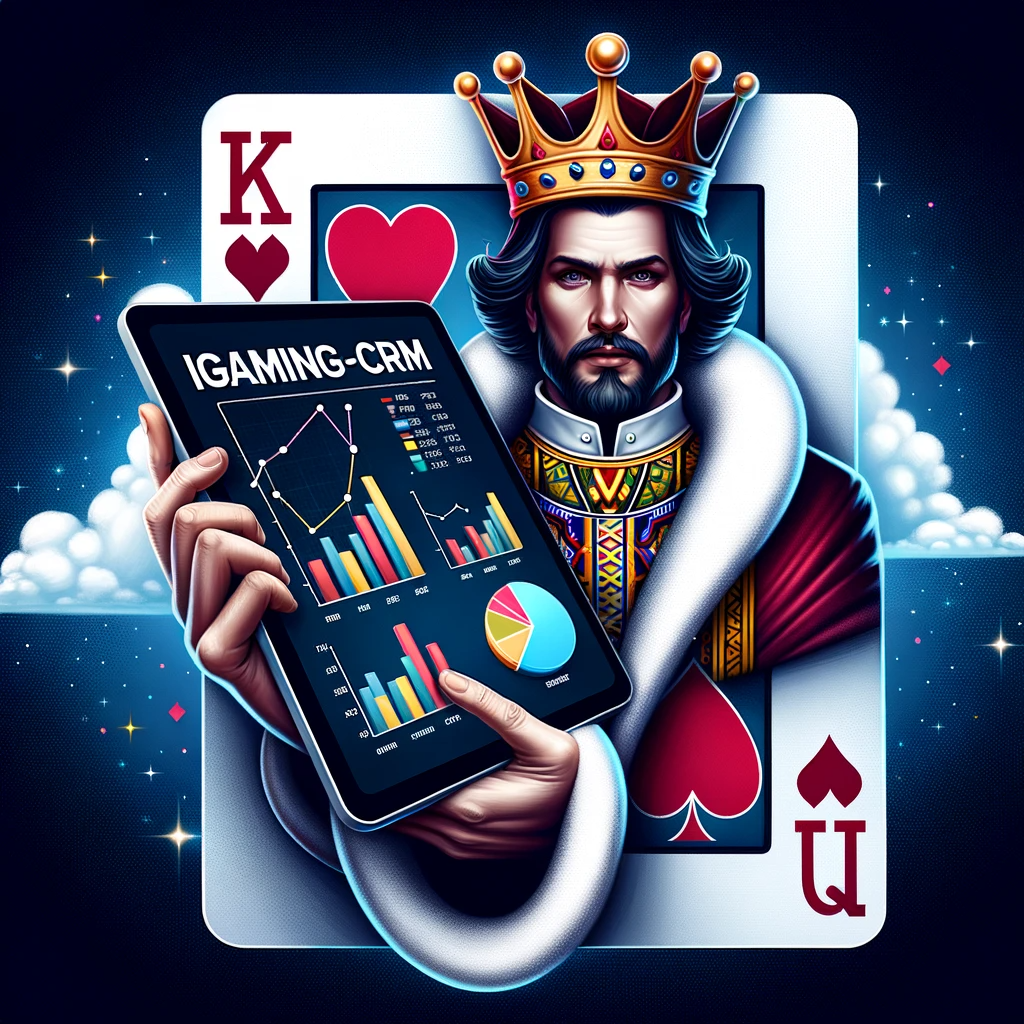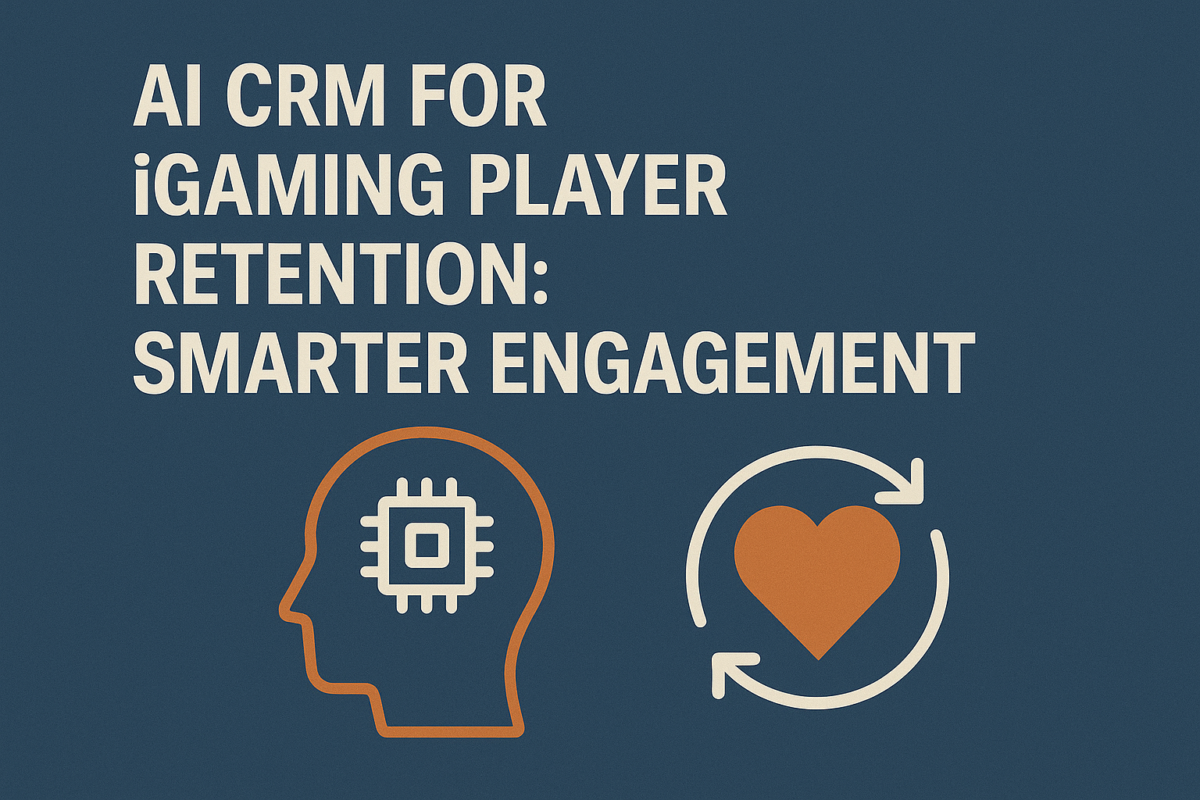AI CRM for iGaming Player Retention: Smarter Engagement
Introduction
In the ever-evolving iGaming landscape, AI CRM for iGaming Player Retention is no longer a game of chance it’s a data-driven strategy powered by AI and CRM innovations. Traditional CRM systems focused on managing customer relationships, but today’s gaming CRM innovations go further, using artificial intelligence to predict, engage, and retain players with unmatched precision.
This article explores how iGaming companies are leveraging AI CRM for iGaming Player Retention to enhance the player experience, prevent churn, and unlock long-term value. From real-time behavior tracking to predictive analytics, discover the tools and technologies reshaping gaming customer retention.
1. The Evolution of CRM in iGaming
From Manual Management to AI-Powered Precision
Early CRM tools in the casino industry primarily handled basic contact management, promotions, and email blasts. As competition grew and player expectations shifted, CRM enhancements became critical.
Modern casino CRM technology integrates with AI, enabling:
- Behavioral segmentation
- Real-time engagement tracking
- Predictive churn modeling
- Automated personalized outreach
2. Why AI is a Game Changer for Player Retention
AI doesn’t just store data, it understands it. When implemented correctly, AI for player retention predicts behavior patterns, identifies churn signals, and suggests real-time actions.
Core Benefits of AI-Driven CRM:
- Predictive Churn Detection: AI models analyze historical data to flag players likely to leave.
- Next-Best-Action Modeling: Suggests optimal engagement strategies per player.
- Smart Incentives: Dynamic bonus systems based on player value and engagement.
- Sentiment Analysis: Gauges player mood from chat interactions and feedback.

ALSO READ: How to Get Investors Excited About Your iGaming Business
3. Key AI Technologies Powering iGaming CRM
3.1 Machine Learning (ML)
Used to cluster players into behavior-based segments and optimize retention campaigns. For instance, high-risk churn users may receive time-sensitive bonuses.
3.2 Natural Language Processing (NLP)
Helps analyze in-game chat, customer support conversations, and reviews to extract sentiment and satisfaction levels.
3.3 Predictive Analytics
Provides player lifetime value (LTV) estimations and ROI forecasts for campaigns.
4. Use Cases: AI in Action for iGaming CRM
Use Case 1: Smart Bonus Allocation
AI identifies the optimal reward types and amounts based on player behavior and predicted lifetime value, reducing bonus abuse while maximizing satisfaction.
Use Case 2: Dynamic Journey Mapping
AI plots real-time journeys for each player, adapting experiences dynamically (game suggestions, message tone, reward cadence).
Use Case 3: Personalized Re-Engagement
A player becomes inactive for 72 hours. AI triggers a personalized notification offering a bonus on their favorite game.
5. Implementing AI-Powered CRM: Best Practices
1. Data Unification
Integrate all player touchpoints (web, mobile, support) into one CRM hub for cohesive analysis.
2. Micro-Segmentation
Go beyond broad categories, AI can define granular personas based on real-time behavior and intent.
3. Automated A/B Testing
Use AI to continuously test and optimize retention strategies (messaging, rewards, etc.).
4. Compliance-First Approach
Ensure AI decisions are explainable and comply with global data protection laws (GDPR, etc.).
6. Case Study: AI CRM Drives Retention by 40%
Background:
A European iGaming operator faced high churn among mid-tier spenders.
Action Taken:
They implemented a custom AI-enhanced CRM platform that tracked inactivity patterns and delivered predictive engagement campaigns.
Results:
- 40% reduction in churn for the segment
- 28% increase in monthly deposits
- 3x improvement in open and click-through rates for re-engagement emails
7. The Future of CRM in iGaming
The road ahead points toward hyper-personalization, real-time automation, and AI transparency.
Emerging Trends:
- Voice-Activated CRM: Integrate voice analysis into support and feedback channels.
- Cross-Platform Identity Graphs: Unified view of player behavior across devices and platforms.
- Explainable AI (XAI): AI decisions must be transparent and justifiable under emerging global regulations.
FAQs
Q1: How does AI improve CRM performance in iGaming?
AI enables predictive modeling, real-time segmentation, and personalized communication, boosting retention and engagement.
Q2: Can AI be used for responsible gaming?
Yes. AI models can detect problematic patterns and trigger proactive messaging or cooldowns.
Q3: Is AI-powered CRM suitable for smaller iGaming operators?
Absolutely. Many SaaS-based CRM platforms offer scalable AI modules suited for all operator sizes.
Call to Action
🎰 Want to future-proof your iGaming business with AI-powered CRM innovations?
📩 Get in touch with our gaming analytics experts to implement scalable, AI-enhanced CRM that drives loyalty and revenue.


